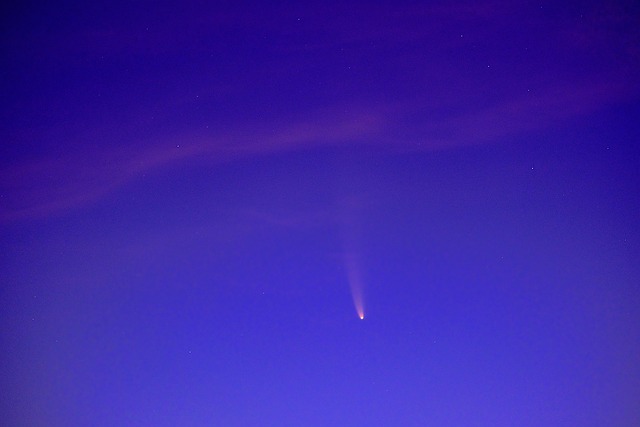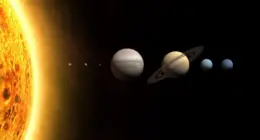Terrestrial refers to Earth-related, while celestial pertains to the sky or celestial bodies like stars. Terrestrial is earthly, and celestial is astronomical.
TL;DR Terrestrial bodies Vs. Celestial bodies
Terrestrial bodies, such as Earth and other planets, are solid and primarily composed of rock or metal. They have a solid surface that can support life as we know it.
Celestial bodies refer to all objects beyond Earth’s atmosphere, including stars, galaxies, moons, asteroids, and comets.
What is a celestial body?

A celestial body is any natural object in space, such as planets, moons, asteroids, and stars. These entities exist outside Earth’s atmosphere and are integral components of the universe.
Celestial bodies are governed by gravitational forces, orbiting around stars or other massive objects. They play a crucial role in shaping the cosmos and are fundamental to astronomical studies.
Observations of celestial bodies contribute to our understanding of the universe’s composition, structure, and evolution, providing insights into the broader celestial phenomena that shape the dynamics of galaxies, solar systems, and cosmic landscapes.
What is a terrestrial body?

A terrestrial body refers to a celestial object primarily composed of rock and metal, resembling Earth’s composition.
Unlike gas giants or icy bodies, terrestrial planets are solid, with defined surfaces and geological features. Examples include Earth, Mercury, Venus, and Mars in our solar system.
These bodies often have atmospheres, varying climates, and geological processes like volcanism and tectonics. Terrestrial bodies are essential in planetary studies, offering insights into the processes that shape rocky planets and the potential for habitability. Understanding these bodies contributes to broader knowledge about planetary formation and the conditions supporting life.
Terrestrial bodies Vs. Celestial bodies – Key differences
| Feature | Terrestrial Bodies | Celestial Bodies |
|---|---|---|
| Composition | Primarily rock and metal | Varied composition including gas, ice, rock, or a combination |
| Examples | Earth, Mercury, Venus, Mars | Stars, planets, moons, asteroids, comets, galaxies |
| Surface Features | Defined surfaces with geological features | Varied surfaces; gas giants lack solid surfaces |
| Atmosphere | May have atmospheres with diverse compositions | May or may not have atmospheres; gas giants have thick atmospheres |
| Orbital Characteristics | Orbits a star (e.g., the Sun) or a planet (e.g., Earth) | Orbits a star, planet, or another massive celestial object |
| Location in Space | Found within a solar system | Can be part of a solar system or exist independently in space |
| Potential for Life | Potential for habitability depending on conditions | May have conditions unsuitable for life; gas giants lack solid surfaces |
| Geological Processes | May exhibit processes like volcanism and tectonics | Processes vary; gas giants may have internal heat-driven processes |
| Visibility at Night | Generally not visible as distinct points of light | Often visible as points of light in the night sky |
How terrestrial and celestial bodies are studied
Terrestrial Bodies:
- Observation: Studied through telescopes and spacecraft, capturing detailed images of surfaces, atmospheres, and geological features.
- Robotic Exploration: Probes and rovers are sent to study planets and moons directly, collecting data on composition, topography, and climate.
- Seismic Studies: Earth is studied through seismic activity, providing insights into its internal structure.
- Meteorology: Weather patterns and climate are studied using satellites, weather balloons, and ground-based instruments.
- Laboratory Analysis: Samples from terrestrial bodies (e.g., rocks, soil) are analyzed in laboratories to understand composition and formation.
Celestial Bodies:
- Telescopic Observations: Astronomers use telescopes to observe celestial bodies’ positions, motions, and characteristics.
- Space Probes: Spacecraft are sent to explore planets, moons, and asteroids, providing close-up data on surface features and composition.
- Satellite Observations: Satellites study celestial bodies from orbit, collecting data on atmospheres, magnetic fields, and radiation.
- Astrophysics: Analyzing light spectra and radiation emissions helps understand celestial bodies’ composition, temperature, and age.
- Computer Modeling: Simulations and computer models aid in predicting and understanding celestial phenomena.
Both terrestrial and celestial bodies are studied using a combination of observational, analytical, and exploratory methods, employing advanced technologies and instruments for comprehensive insights.
Image Credits
Featured Image By – Valentin from Pixabay






